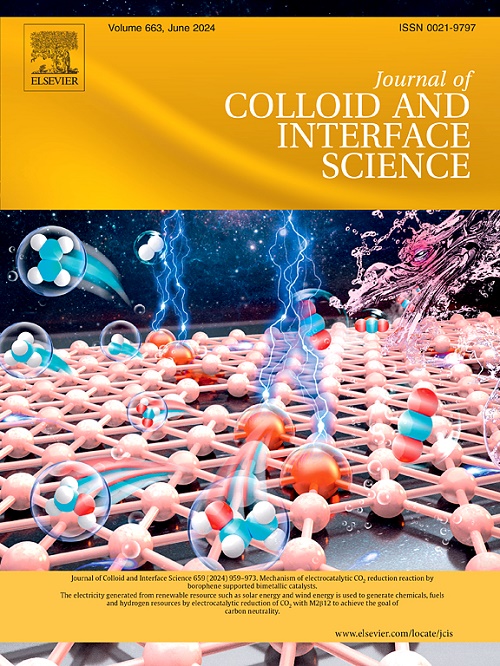Construction of low-energy regenerative bagasse-based carbon capture material for high efficiency CO2 capture
IF 9.4
1区 化学
Q1 CHEMISTRY, PHYSICAL
引用次数: 0
Abstract
Using biomass for the production of low-energy regenerative carbon capture materials represents an effective strategy to advance carbon dioxide capture and storage technologies. In this study, a low-energy regenerative bagasse-based CO2 capture material is synthesized through a one-step, rapid crosslinking strategy. In this method, epichlorohydrin is used to crosslink bagasse with temperature sensitive Pluronic® F-127 and polyethyleneimine, thereby addressing the challenge of simultaneously incorporating multiple functional groups into the biomass matrix. The resulting material with abundant amino adsorption sites demonstrates a high adsorption capacity of 4.52 mmol/g. Interestingly, the temperature-sensitive response of the material facilitates the grafted amine chain segments on bagasse to stretch and shrink reversibly within a narrow temperature range of 25 °C for adsorption and 55 °C for desorption. The shrinkage state is conducive to the CO2 desorption process, resulting in an ultralow regeneration temperature of 55 °C. Additionally, the water contained in the material enhances its cyclic stability in extreme environments, such as pure CO2 atmosphere at high temperature. Overall, this research not only provides new ideas for enhancing the long-term stability and economic viability of CO2 capture materials but also offers feasible solutions for combating climate change and promoting sustainable development.

求助全文
约1分钟内获得全文
求助全文
来源期刊
CiteScore
16.10
自引率
7.10%
发文量
2568
审稿时长
2 months
期刊介绍:
The Journal of Colloid and Interface Science publishes original research findings on the fundamental principles of colloid and interface science, as well as innovative applications in various fields. The criteria for publication include impact, quality, novelty, and originality.
Emphasis:
The journal emphasizes fundamental scientific innovation within the following categories:
A.Colloidal Materials and Nanomaterials
B.Soft Colloidal and Self-Assembly Systems
C.Adsorption, Catalysis, and Electrochemistry
D.Interfacial Processes, Capillarity, and Wetting
E.Biomaterials and Nanomedicine
F.Energy Conversion and Storage, and Environmental Technologies

 求助内容:
求助内容: 应助结果提醒方式:
应助结果提醒方式:


